Calabacitas con Elote (Mexican Zucchini & Corn)
33
on Aug 25, 2021, Updated Mar 04, 2025
This post may contain affiliate links. Please read our disclosure policy.
Have an abundance of zucchini and corn on hand? If so, you need to try this deliciously easy recipe for authentic Mexican Calabacitas con Elote. This summery recipe features plenty of both, plus juicy tomatoes, onions, and garlic all swimming in a creamy dreamy sauce. It’s the perfect vegetarian dish!
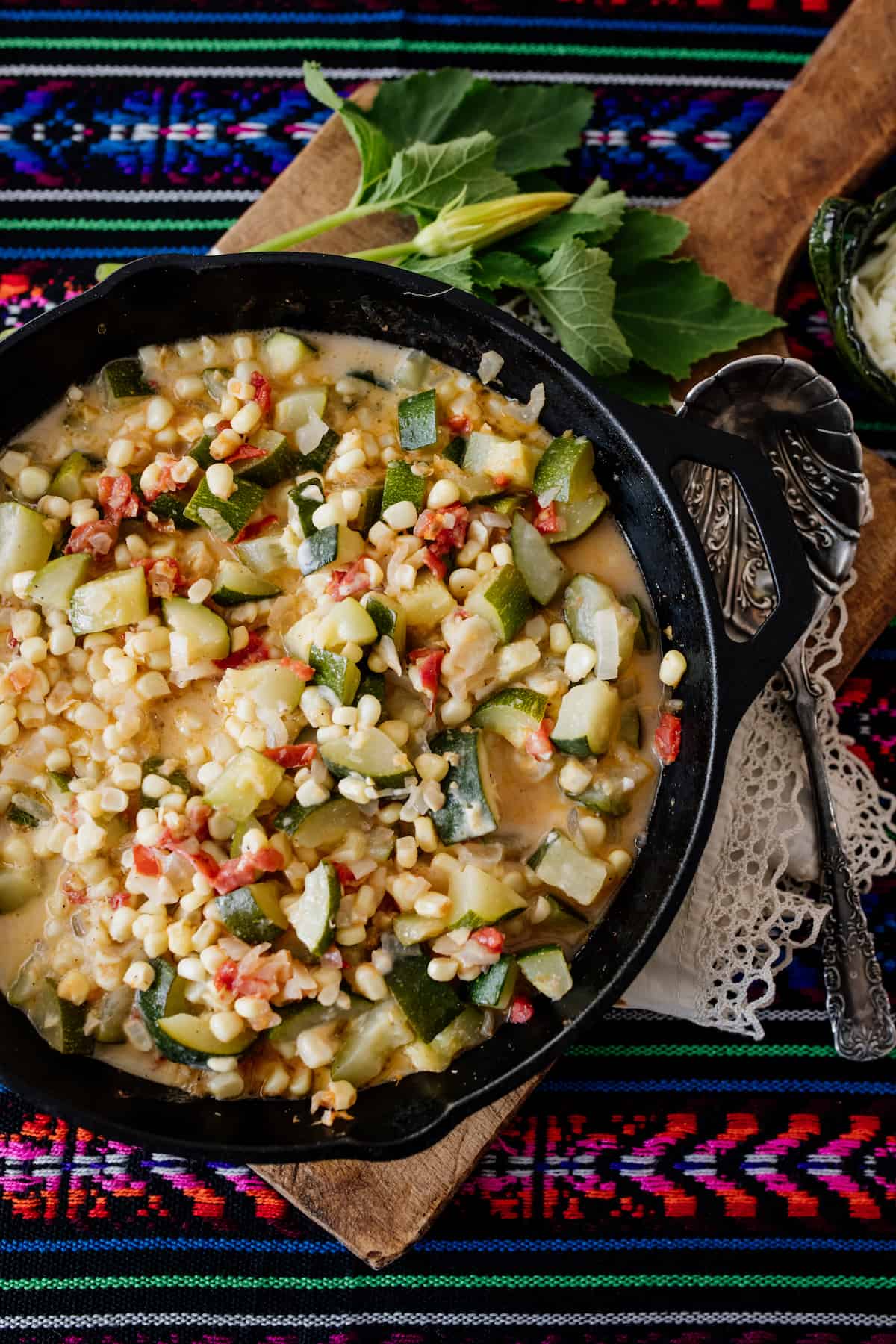
Table of Contents
- What is Calabacitas?
- Why You’ll Love This Recipe For Calabacitas a la Mexicana
- Ingredients & Substitutions
- How to Make Calabacitas con Elote y Queso
- Optional Variations
- Serving & Topping Suggestions
- Expert Tips & Tricks
- Storage & Heating Instructions
- Frequently Asked Questions
- More Mexican Zucchini Recipes
- Calabacitas con Elote (Mexican Zucchini & Corn) Recipe
During July and August, my garden is overrun with zucchini and summer squash. They’re summer’s most prolific veggies! And while there are tons of delicious ways to put them to use—like my Mexican chocolate zucchini bread, picadillo zucchini boats, and zucchini and corn tamales—this easy, cheesy calabacitas recipe is the one I turn to most often.
What is Calabacitas?
Calabacitas con Elote is a vibrant and traditional Mexican dish that literally translates to “zucchini with corn.” This dish truly showcases the simple beauty of summer produce, making it a must-try when zucchini season is at its peak.
Much like any authentic Mexican recipe I share, there are probably as many variations of calabacitas as there are Hispanic families. Some recipes include colorful bell peppers, fiery green chile, or even pork or chicken. It can also be made dairy-free and vegan by swapping in your favorite salsa for the creamy sauce.
My family’s calabacitas recipe includes corn, tomatoes, onion, and garlic, plus a special ingredient known as suero (whey). This buttery and creamy liquid adds a lovely richness, and it catapults me back to childhood every time. We also like to top ours with melty cheese—a move that makes it a worthy entrée, though it’s also wonderful as a side dish. 😋
Why You’ll Love This Recipe For Calabacitas a la Mexicana
- The colorful mixture of vibrant veggies encapsulates the essence of summer—it’s bursting with flavor in every bite!
- This calabacitas con queso y elote is rich and hearty enough to stand alone as a vegetarian meal, but is also an excellent side for all your favorite grilled meats.
- This classic Mexican zucchini recipe is quick and easy to throw together. You only need 8 simple ingredients and about 20 minutes to get it on the table!
Ingredients & Substitutions
The complete list of ingredients, quantities, and instructions can be found in the printable recipe card below.
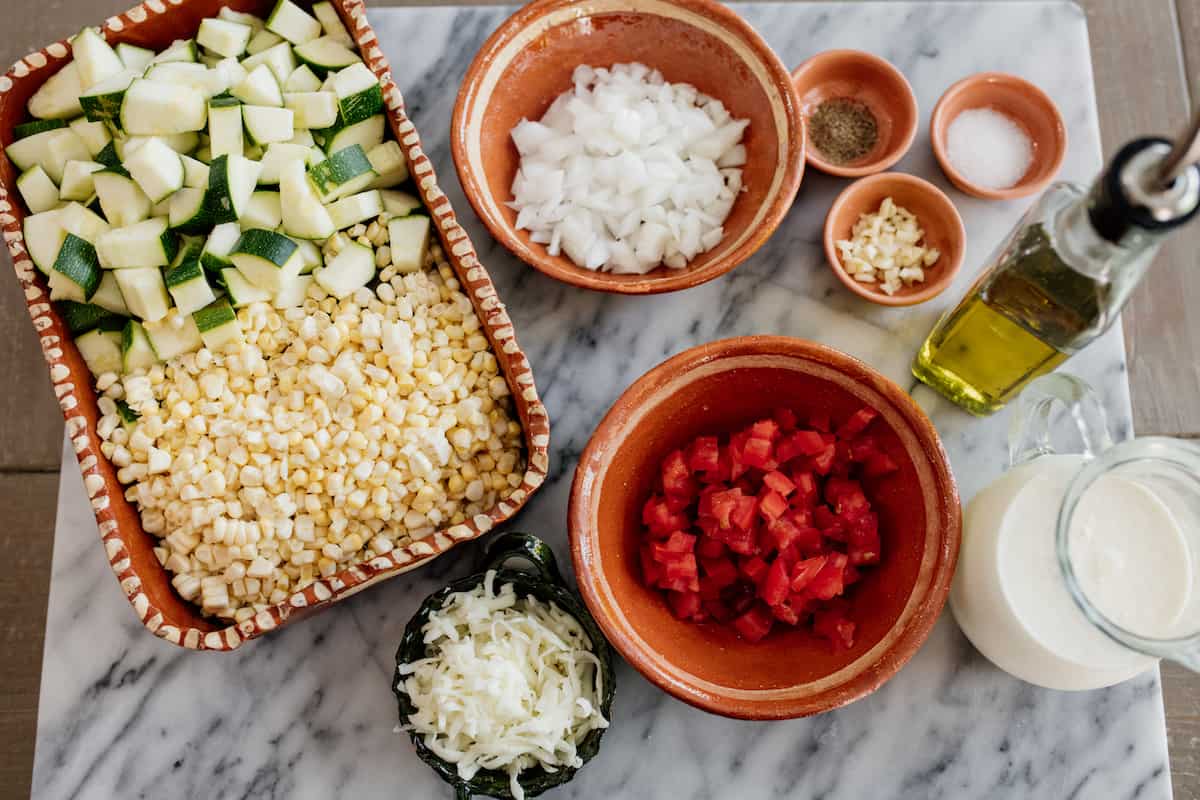
- Corn Kernels – During the summer, fresh ears of corn are very cheap—I can usually get 4 for about $1. You’re welcome to swap in frozen corn kernels if you don’t want to deal with shucking or cutting fresh ears. In a pinch, you can also use canned corn kernels, but I’d use this as a last resort as they have a softer texture and don’t taste as fresh.
- Zucchini or Yellow Squash – I suggest green zucchini or the lighter green variety, sometimes called Mexican squash. Yellow squash also works well.
- Onion – I typically use white onion, but feel free to use yellow instead.
- Roma Tomatoes – Any firm, meaty tomato variety will work here. Be sure to seed tomatoes, or the mixture might curdle.
- Garlic – Fresh is best, but you’re welcome to use the jarred kind to save prep time.
- Suero (Whey) – This special ingredient is my family’s signature inclusion. The liquid left over after curdling and straining milk in cheese production, or found in freshly opened yogurt containers, is whey. My family purchases ours from Licon Dairy in El Paso. You can use buttermilk instead, but you will need to add extra salt. You can also add a dollop of crema Mexicana or sour cream for a thicker and creamier texture.
- Olive Oil – Just your normal cooking oil is perfect.
- Freshly Grated Cheese – Totally optional, but very yummy. It’s also a great way to boost the protein content to make your calabacitas more filling. I like to use asadero, Oaxaca, or chihuahua cheese.
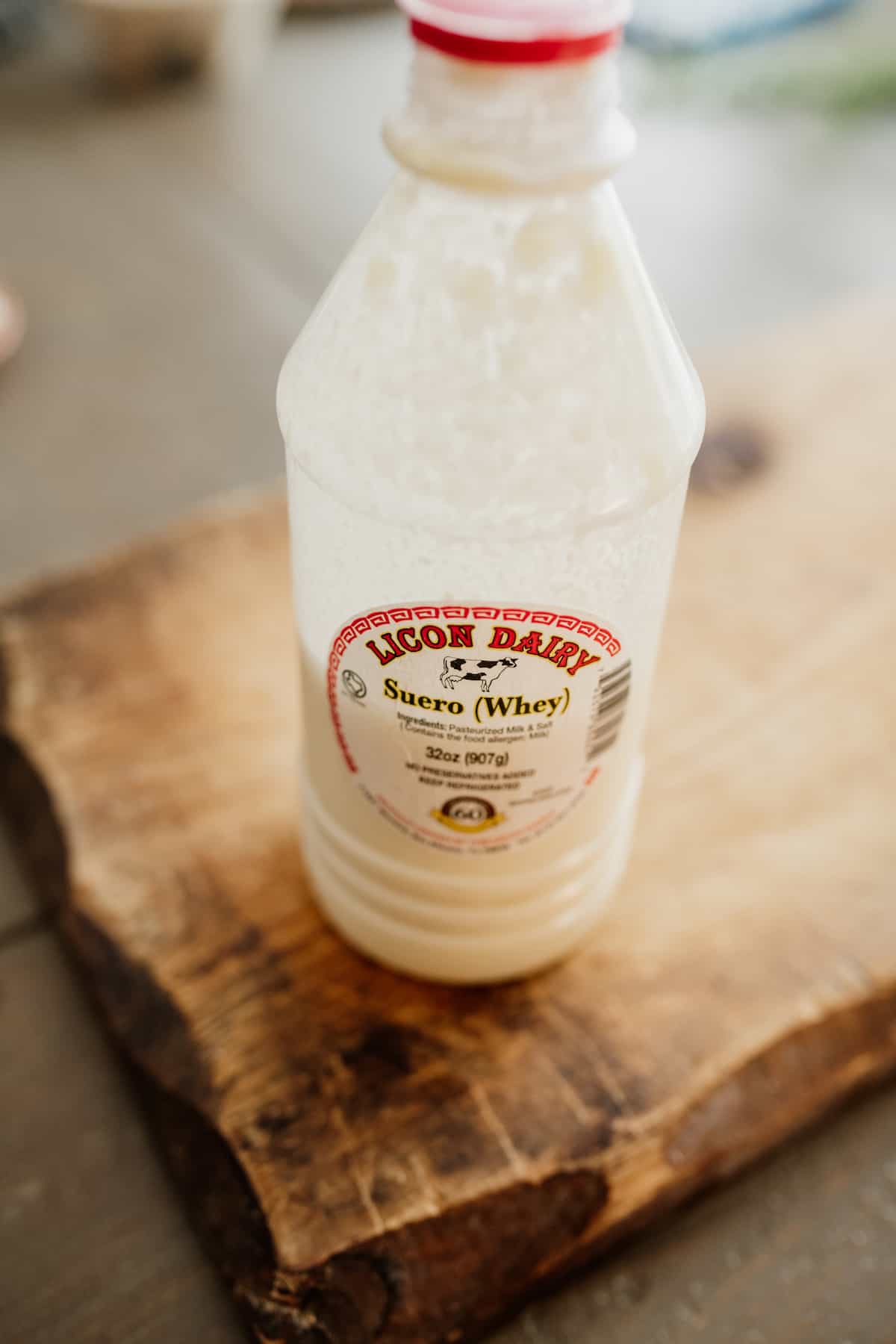
How to Make Calabacitas con Elote y Queso
Step 1: Remove corn kernels from the cobs using a knife at an angle. Set three kernels aside.
Step 2: Sauté the onions. Heat the olive oil in a large skillet over medium-high heat. Cook the onion in the hot oil for about 2 minutes.
Step 3: Sauté the tomatoes for 2 more minutes.
Step 4: Add the garlic. Cook for an additional minute until fragrant.
Step 5: Mix the zucchini and corn into the pan with the alliums and tomatoes. Cover and simmer until the zucchini is tender, about 10 minutes.
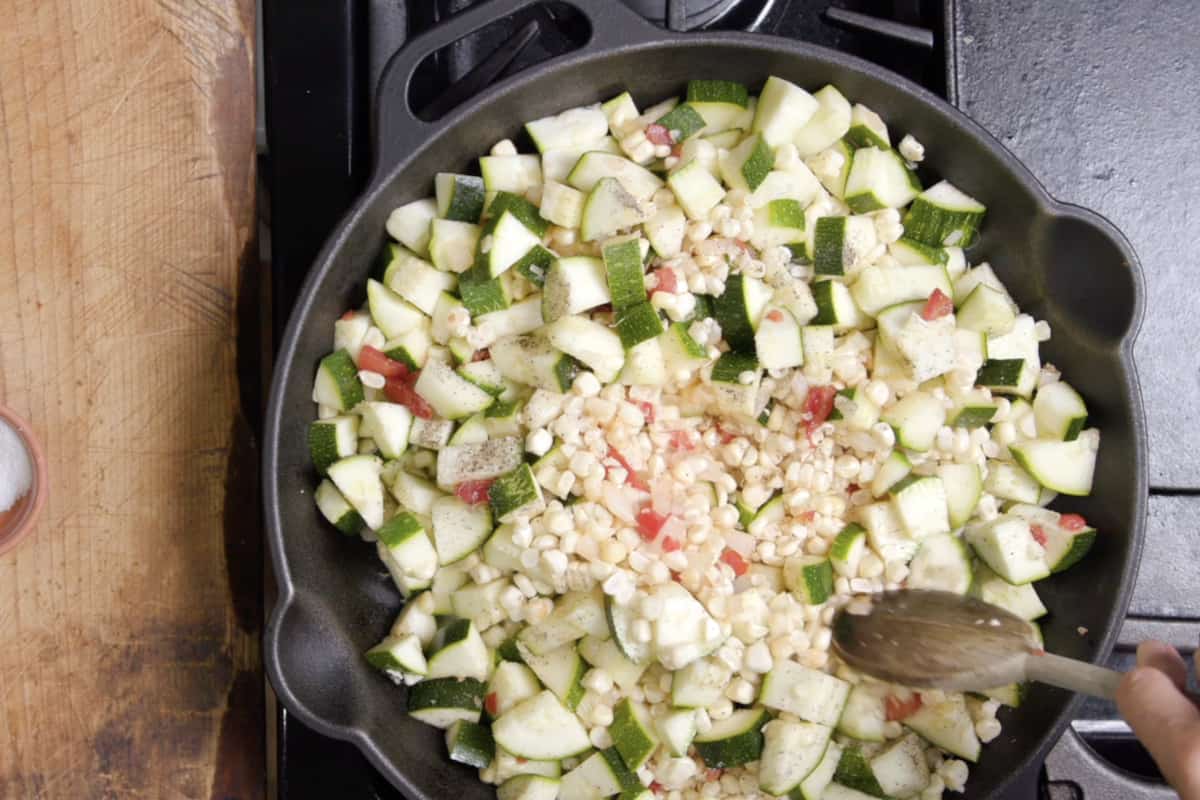
Step 6: Simmer with suero. Uncover and stir the suero or buttermilk and crema into the mixture. Season with salt and black pepper to taste, stirring to incorporate. Bring to a boil. Reduce heat to low, and simmer.
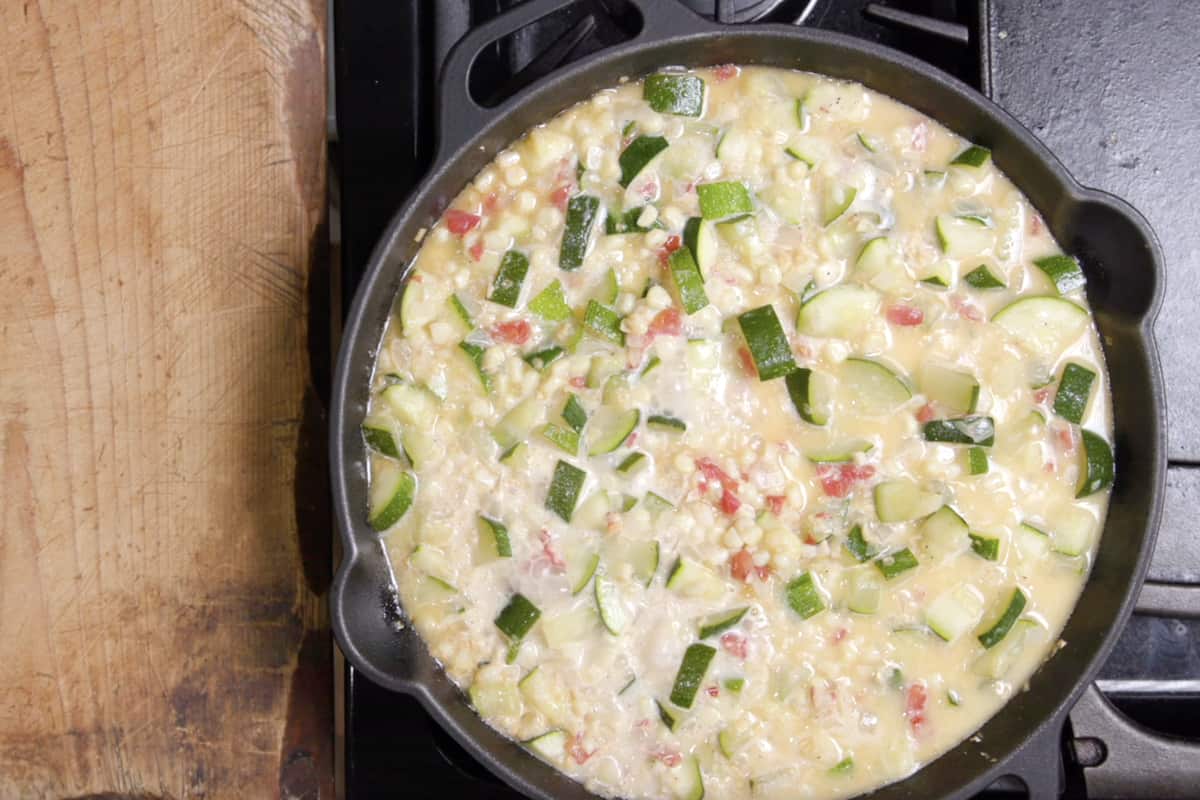
Step 7 (Optional): Sprinkle with cheese, let it melt, then serve.
More of a visual learner? My mom made a video showing how to make our calabacitas con elote recipe where she shares plenty of great tips.
Optional Variations
This recipe has not been tested with all of these substitutions or variations. If you replace or add any ingredients, please let us know how it turned out in the comments below!
Calabacitas mexicanas has many variations, so feel free to riff and make it your own! The combinations are endless. Here are just a few ideas to try:
- Vegan/Dairy-Free – Use homemade salsa verde or green chile salsa casera instead of suero, and omit the cheese.
- Rainbow – Add extra color with a trio of diced bell peppers.
- Extra Spicy – Add your favorite diced green chiles for added heat. I like using roasted poblano rajas.
- Meaty – Add Mexican picadillo to make carne molida con calabacitas, diced pork to make calabacitas con puerco, or poached chicken to make calabacitas con pollo. They’re all hearty and delicious options.
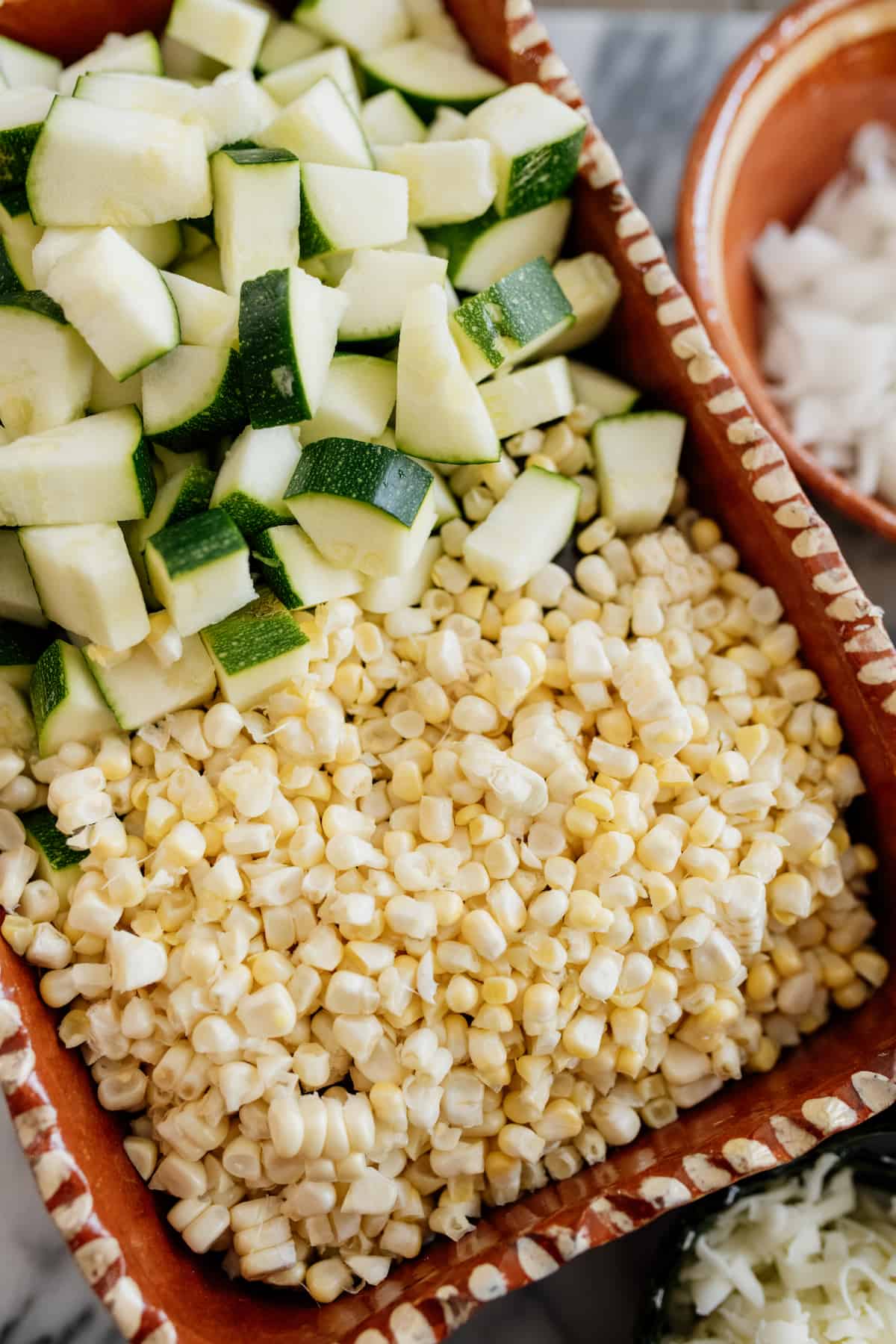
Serving & Topping Suggestions
One of my favorite things about calabacitas con elote is how versatile it is. I will often eat it as a standalone meal. Calabacitas is a popular side dish that pairs well with a variety of Mexican entrees and can be served instead of classic arroz rojo or frijoles de la olla.
Wondering what goes with calabacitas? It’s wonderful alongside grilling season favorites like quick & easy carne asada, carne a la tampiquena, steak fajita kebabs, or my easy one pan baby back ribs. Feel free to garnish with a handful of chopped cilantro for freshness, or crumbled queso fresco or cotija cheese for more of a Mexican street corn vibe.
Expert Tips & Tricks
- Be sure to seed the tomatoes, or the dairy mixture might curdle.
- To keep corn kernels from flying every which way, use a bundt pan or tube pan. Place the stem side of the corn in the center hole to stabilize the ear, then slice the kernels off. The surrounding pan catches them like a dream!
- Shredding your own cheese not only gives you better bang for your buck, it also ensures the best consistency. As far as which cheese to use, you have lots of options like Asadero, Oaxaca Cheese, Chihuahua, Monterey Jack, or Cheddar.
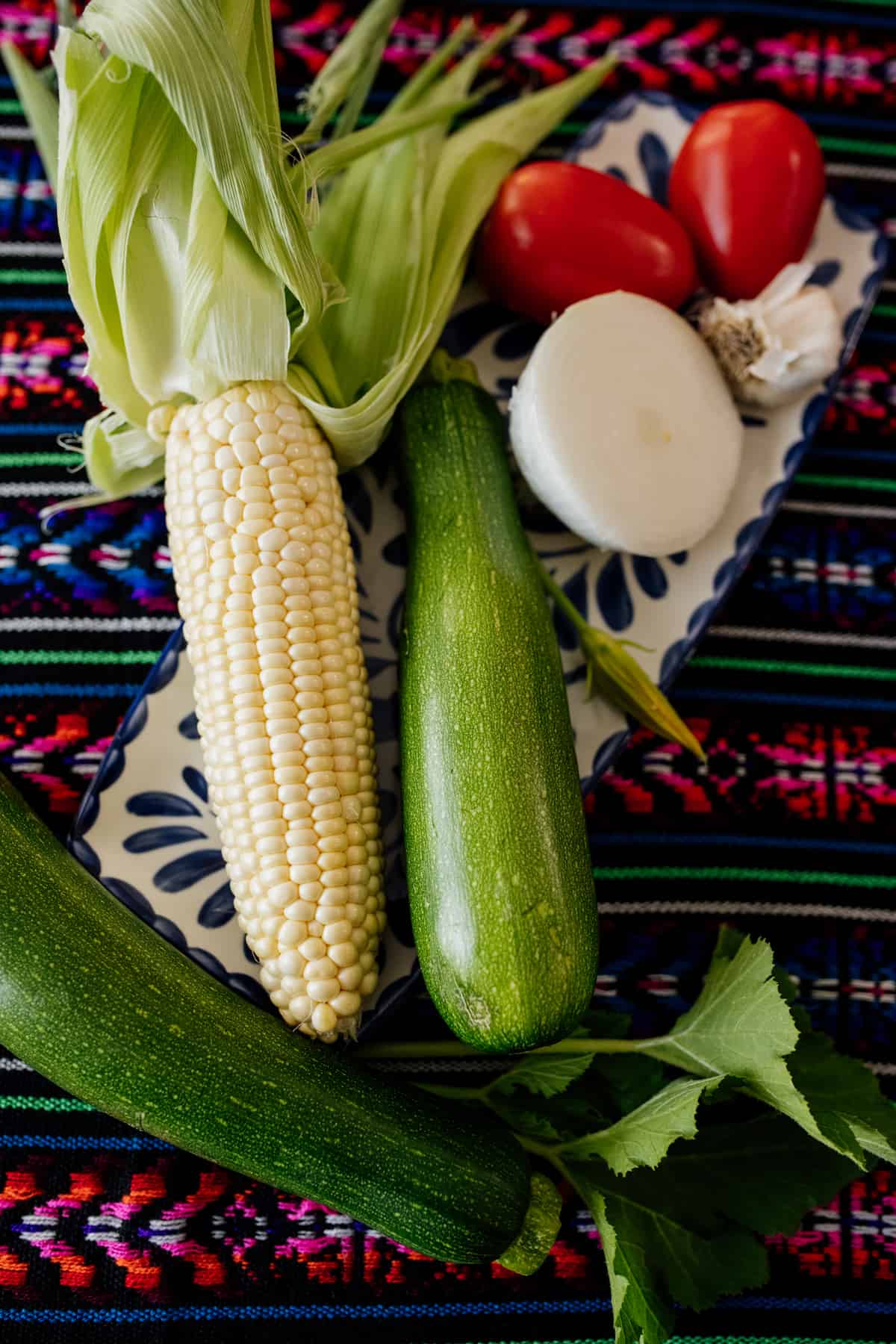
Storage & Heating Instructions
- Refrigerate: Store calabacitas in an airtight container in the fridge for up to five days.
- Reheat: When you’re ready to eat, reheat the leftovers on a stove, in a pot, or in a microwave. Whichever you prefer, make sure to stir the dish halfway through to ensure it warms up evenly. Enjoy!
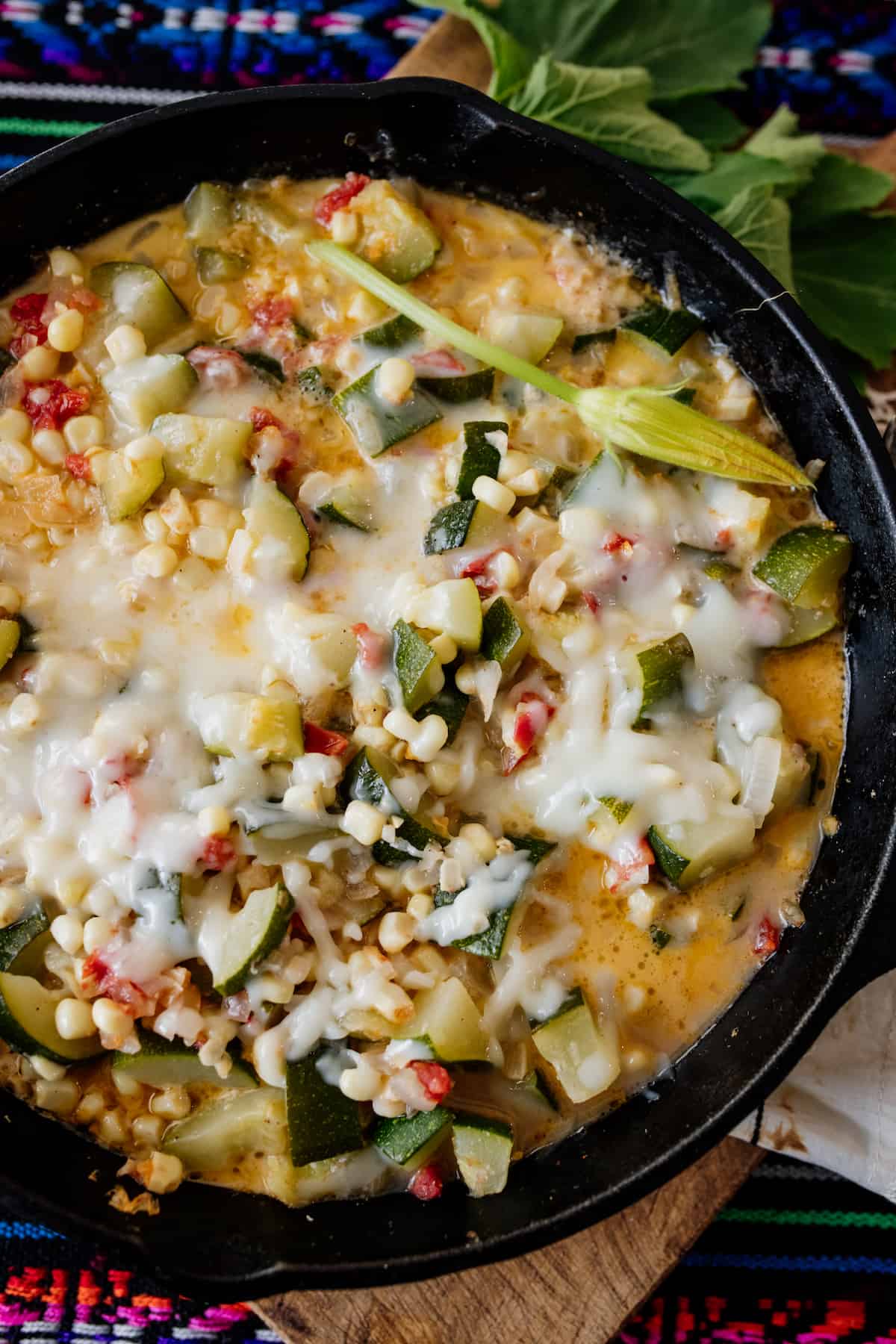
Frequently Asked Questions
Calabaza is not the same as zucchini, though they are both types of squash. Calabaza, or West Indian pumpkin, is a tropical squash with a hard, thick skin and a sweet, starchy flesh, similar to a pumpkin or butternut squash.
Zucchini, on the other hand, is a type of summer squash with a thin, edible skin and a mild flavor. It usually appears elongated and green, though golden varieties exist. Mexican squash, or “calabacita,” resembles zucchini but has a lighter green, almost whitish skin, and a slightly sweeter flavor.
Generally speaking, “calabacitas” in the plural refers not to a specific type of squash but to a traditional Mexican dish made primarily from an assortment of thin-skinned summer squash.
Calabacitas means “zucchinis” and is pronounced kah-lah-bah-SEE-tahs.
Calabacitas has roots deeply embedded in Mexican cuisine, reflecting a blend of indigenous and Spanish influences that characterize much of the region’s culinary traditions. The key ingredients—squash, corn, and sometimes peppers—are all native to the Americas and were staple foods among the indigenous peoples long before the arrival of Europeans.
The introduction of dairy products by the Spanish after their arrival in the 16th century influenced the dish as it is often made today. Calabacitas con queso therefore exemplifies the fusion of pre-Hispanic agricultural products with European culinary techniques and ingredients.
It depends on the recipe! Some are made with meat products, but this calabacitas con elote is vegetarian.
I don’t typically recommend freezing this particular calabacitas recipe, as the dairy-based sauce has a tendency to separate. That said, if you make it using the vegan variation above, it should keep well in the freezer for up to 3 months.
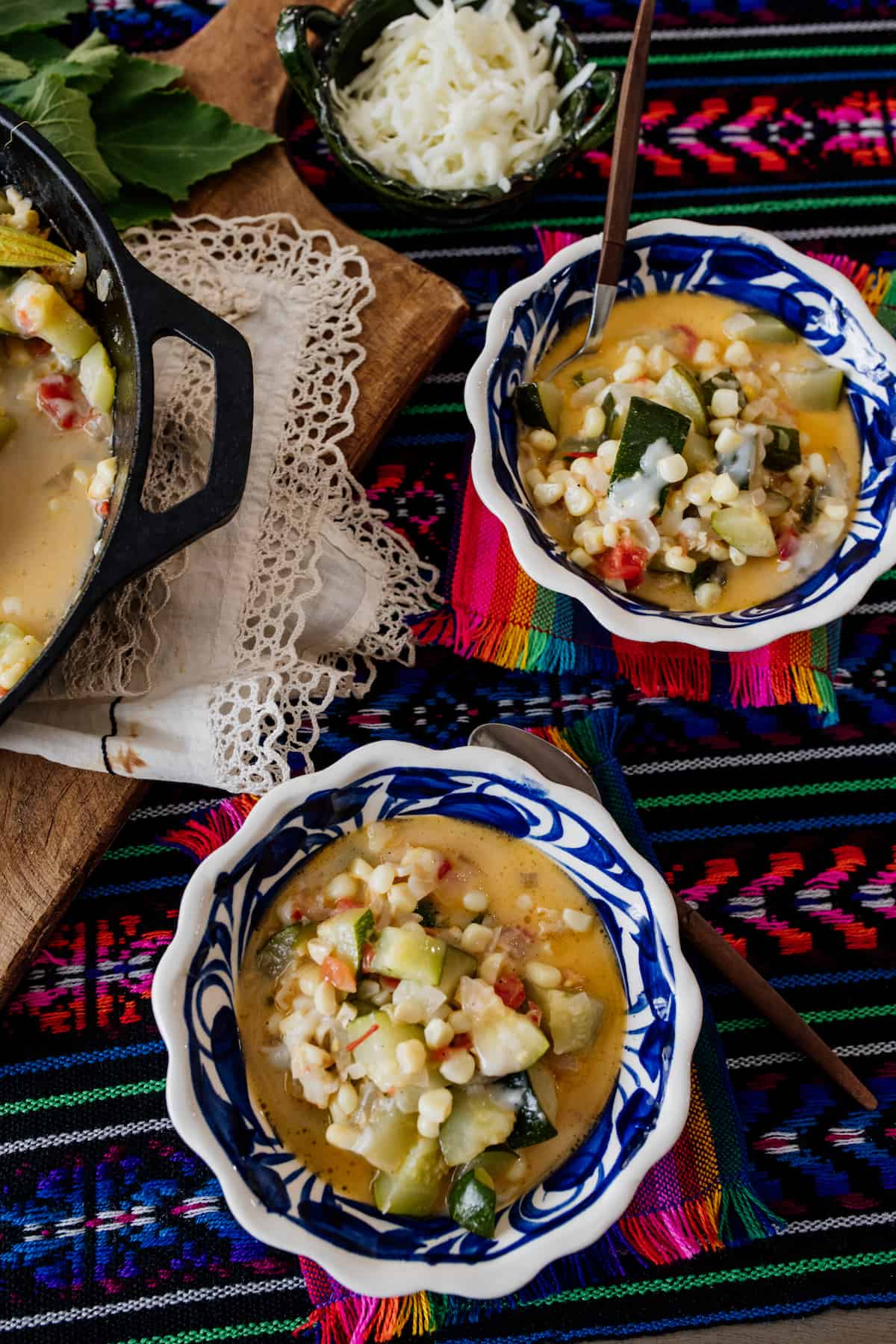
More Mexican Zucchini Recipes
- Creamy Zucchini, Corn, and Poblano Rajas
- Poblano and Zucchini Frittata
- Picadillo Zucchini Boats
- Zucchini and Corn Tamales
- Spicy Mexican Chorizo Zucchini Frittata
- Mexican Chocolate Zucchini Cake with a Cream Cheese Glaze
- Mexican Chocolate Zucchini Bread
Did you make this recipe? Leave me a star rating, comment below, and tag @muybuenocooking on the gram!

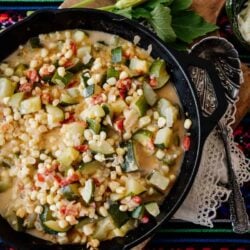
Calabacitas con Elote (Mexican Zucchini & Corn)
Ingredients
- 4 ears of corn, shucked and cut from the cob
- 4 zucchini or squash, chopped
- 1 small onion, chopped
- 2 roma tomatoes, seeded and chopped
- 3 cloves garlic, minced
- 2 cups suero, whey or a combo of buttermilk and crema can be used as a substitute
- 1 tablespoon olive oil
- cheese, grated (Chihuahua, Monterey Jack, or cheddar)
Instructions
- Remove corn kernels from the cobs using a knife on an angle. Set kernels aside.
- Heat the olive oil in a large skillet over medium-high heat; cook and stir the onion in the hot oil, about 2 minutes then add the tomatoes for 2 more minutes.
- Add the garlic for an additional minute until fragrant.
- Mix the zucchini and corn into the onion and garlic and cover until zucchini is tender; about 10 minutes.
- Uncover and stir the suero/buttermilk into the mixture. Season with salt and pepper; stir. Bring to a boil. Reduce heat to low, and simmer.
- Sprinkle with cheese (optional) to serve.
Video
Notes
- Feel free to add roasted poblano pepper strips like this recipe.
- For a heartier dish add diced pork or chicken.
- Instead of fresh corn use frozen corn, or in a pinch, use canned.
- Instead of suero, replace with a mixture of 1 cup buttermilk and 1 cup crema Mexicana or sour cream.
- Be sure to seed tomatoes, or mixture might curdle.
- For a dairy free option use salsa verde or salsa casera and do not add cheese.
- White cheese options – asadero, Chihuahua, Monterey Jack, or cheddar
- You can store calabacitas in an airtight container in the fridge for up to five days.
- When you’re ready to eat, reheat the leftovers on a stove, in a pot, or in a microwave. Whichever you prefer, make sure to stir the dish halfway through to ensure it warms up evenly. Enjoy!
Nutrition
Nutrition information is automatically calculated, so should only be used as an approximation.
Photos by Jenna Sparks / Video by Pure Cinematography
Originally published: September 2010. This recipe is also published in the Muy Bueno cookbook.

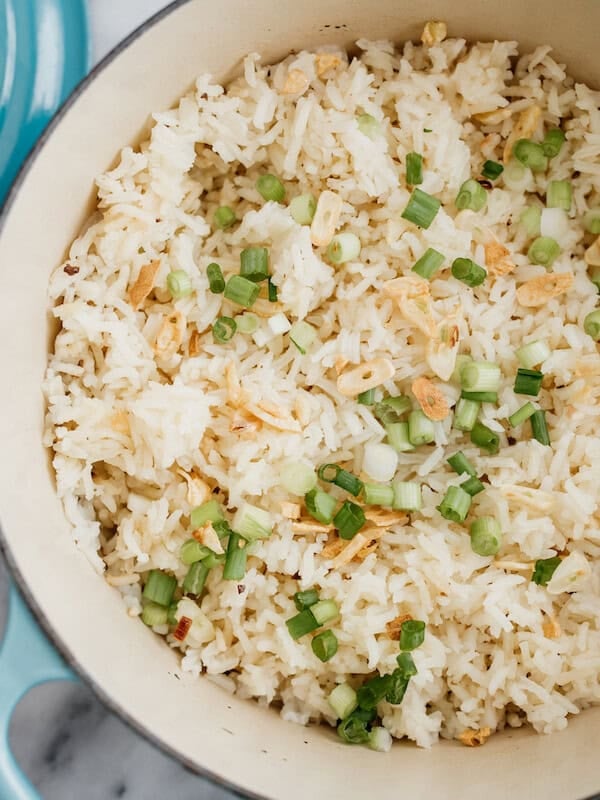

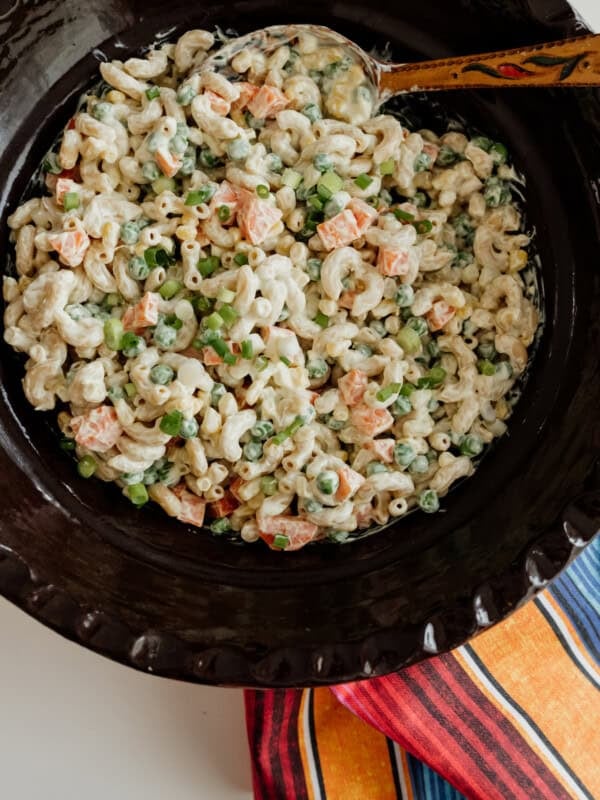









My made this all the time. She did not add the suerro or buttermilk.
We always loved the dish as a side with lots of cheese.
We did not grow up using suero or oil in our calabasas. The only dairy and the queso, of course. I’m going to try the suero, I bet it takes calabasas in an unexpected way. Thank you!
Used regular whole milk to replace buttermilk. Still turned out amazing. Thanks!
Delicious
Calavacitas, one of the most popular in any Mexican home, especially when they are in season, love this dish. Mom used to make it when everything was fresh from the garden, just like you said mija. Thank you for the wonderful memories mija.
Sabroso.